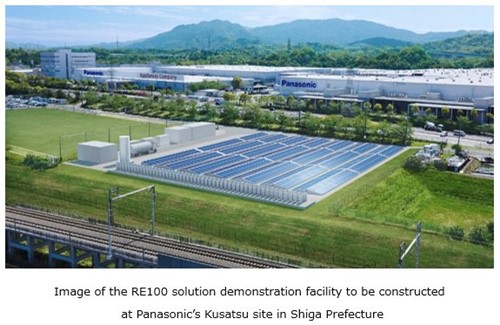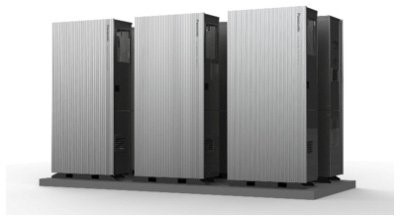News
Panasonic to demonstrate RE100 Solution using H2 fuel cell generators

Panasonic revealed its plan to demonstrate an “RE100 solution” that supplies 100% of the electricity consumed in business activities from renewable sources by using an in-house power generation system combining pure hydrogen fuel cell generators and photovoltaic generators.
There are two main methods of procuring renewable electricity, in-house power generation and external procurement. There are also various external procurement options, including direct contracts with business operators who own power-supply systems that use renewable energy and the use of energy attribute certificates. Companies will choose from these options to ensure a 100% ratio of power generated from renewable sources. However, there are different types of energy attribute certificates and their supply and price depend on market conditions. Furthermore, photovoltaic power generation systems, which have become widespread as a means of generating power in-house, have some obstacles as a means for companies to achieve RE100. They require a wide installation area to supply all the electricity required for business activities, and their power generation is unstable due to their susceptibility to weather.
As a means to resolve these issues, Panasonic proposes a solution that combines pure hydrogen fuel cell generators, photovoltaic generators, and storage batteries. To demonstrate this solution, Panasonic will build a large facility at its Kusatsu site in Shiga Prefecture, which is equipped with an in-house power generation system that combines pure hydrogen fuel cell generators (500 kW) and photovoltaic generators (approx. 570 kW), as well as lithium-ion storage batteries (approx. 1.1 MWh) for storing surplus power. The power generated with this system supplies the entire power used in manufacturing departments of the fuel cell factory located within the Kusatsu site. In parallel, Panasonic will develop and verify technologies related to the optimal power supply and demand management based on integrated control of the power generators and the storage battery system.
Panasonic will contribute to the decarbonization of society by proposing new options for expanding the adoption of renewable sources with the full-scale use of hydrogen.2
Overview of the demonstration work
Panasonic developed the pure hydrogen fuel cell generator used in the demonstration by leveraging the technologies developed for the ENE-FARM household fuel cell cogeneration system. It is compact, highly efficient, and can scale up its power output to meet demand based on integrated control of multiple units. In addition, it allows flexible installation on rooftops, in basements, and small spaces.

In order to simulate the operation of the power generation system on a factory rooftop, the equipment will be installed on a surface area equivalent to the building area of Panasonic's fuel cell factory (Kusatsu City, Shiga Prefecture) to supply the electricity used in the factory.
The combination of lithium storage batteries enables adequate energy management in response to power demand and effective use of surplus power generated during days when the factory is not in operation. Through this demonstration, Panasonic will accumulate know-how and establish a track record in energy management, including the operation of pure hydrogen fuel cell generators, and aim to commercialize the RE100 solution, which uses power generated in-house from renewable sources to supply 100% of the electricity required for business activities.
- 1. Demonstration conducted with the full-scale use of hydrogen as a fuel for in-house power generation to supply the electricity required for factory operations (as of May 24, 2021, surveyed by Panasonic)
- 2. It is possible to achieve RE100 with the use of green hydrogen generated from renewable sources, including the use of energy attribute certificates. Panasonic will start the demonstration using hydrogen not derived from renewable sources, but will strive to achieve RE100 by eventually utilizing hydrogen from such sources.
- 3. A global total of 309 companies took part in this initiative, including 54 from Japan (as of May 2021). Panasonic joined in August 2019.

